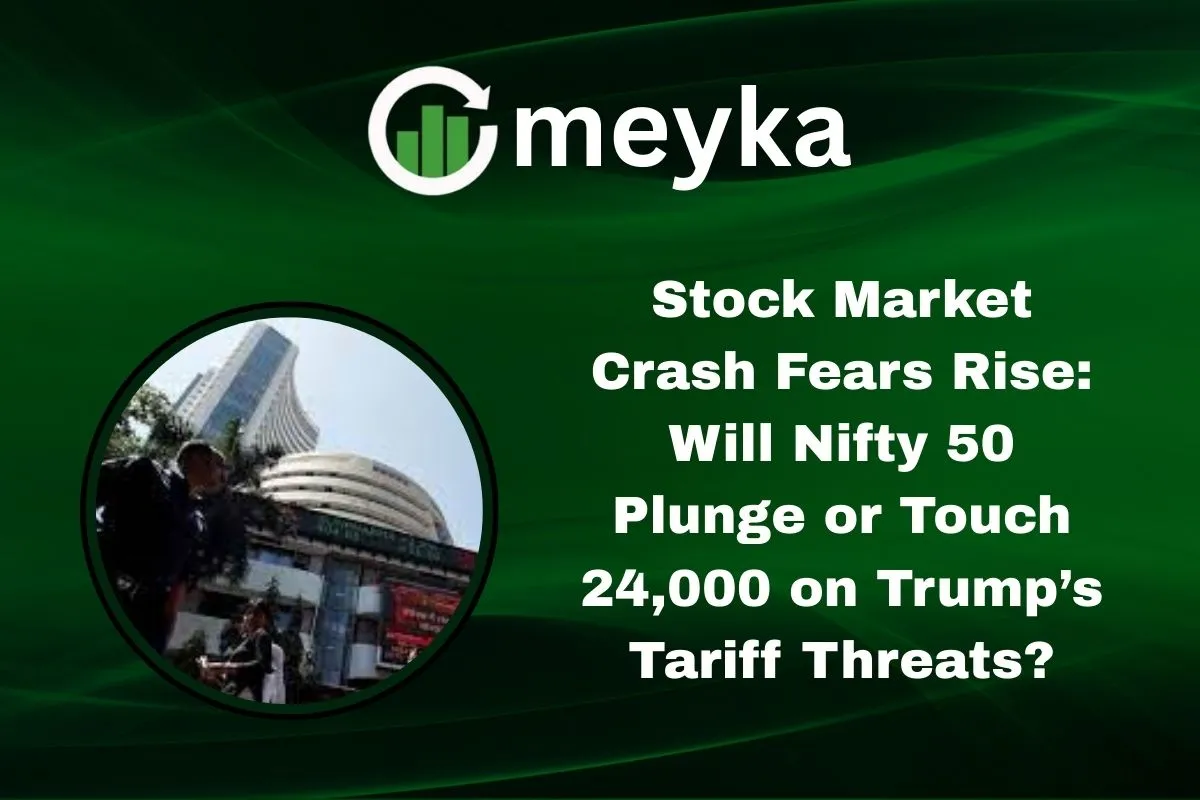Stock Market Crash Fears Rise: Will Nifty 50 Plunge or Touch 24,000 on Trump’s Tariff Threats?
The Indian stock market is facing turbulent times. The Nifty 50 index, a key benchmark, closed at 24,712 on August 26, 2025, marking a 1.02% decline amid escalating concerns over U.S. tariffs on Indian goods. These tariffs, imposed by former President Donald Trump, have intensified fears of a potential market crash. In this article, we delve into the factors influencing the Nifty 50’s performance, the implications of the tariff threats, and expert analyses on the market’s trajectory.
Background on Trump’s Tariff Threats
In August 2025, the Trump administration announced a 50% tariff on most imports from India, doubling the previous 25% tariff introduced earlier in the month. This move is a punitive response to India’s continued purchase of discounted Russian oil, which the U.S. claims indirectly supports Russia’s war in Ukraine. The tariffs hit many Indian exports to the U.S., such as textiles, gems, jewelry, and seafood, but exclude products like smartphones.
India has condemned the tariffs as unjust and vowed to continue its oil deals with Russia. The government is also pursuing domestic reforms to counteract external pressures.
Nifty 50 Performance Amid Global Uncertainty
The Nifty 50 index has been highly volatile over the last few months. From a high of 26,270 in September 2024, it fell by over 13% to a low of 22,786 in January 2025. As of August 26, 2025, the index stands at 24,712.
Investor sentiment has been affected by global uncertainties, including the U.S. tariffs and concerns over a potential global recession. Foreign portfolio investors (FPIs) have pulled out over ₹61,000 crore from Indian equities between January and March 2025, contributing to market instability.
Factors Influencing Nifty 50 Movements
Several factors are influencing the Nifty 50’s performance:
- Global Trade Tensions: The U.S. tariffs on Indian goods have raised concerns about the impact on India’s export sectors.
- Foreign Investment Outflows: The withdrawal of FPIs has put downward pressure on the market.
- Currency Depreciation: The Indian rupee has depreciated sharply, affecting investor confidence.
- Domestic Economic Indicators: Mixed trends in consumption and capital expenditures have added to the uncertainty.
Historical Correlations and Lessons
Historically, trade tensions and tariff threats have led to market volatility. For example, the 2018 U.S.-China trade conflict led to significant drops in global markets. Similarly, the Indian market saw a sharp selloff in April 2025 due to U.S. tariffs and recession fears.
These events highlight the sensitivity of markets to global trade dynamics and the importance of diversification in investment portfolios.
Conclusion
The Nifty 50’s performance amid the renewed U.S. tariff threats underscores the vulnerability of emerging markets to global trade tensions. While the index has shown resilience, the ongoing uncertainties pose risks to its stability. Investors should remain vigilant, diversify their portfolios, and stay informed about global developments to navigate these challenging times.
FAQS:
Yes. The higher tariffs raise the prices of Indian goods being exported into the U.S. This may lower profits for companies and create uncertainty. The stock market can see more ups and downs.
Export-based companies are hit most. IT, pharma, textiles, gems, jewelry, and seafood firms may lose business. Their stock prices may fall as global demand slows.
A plunge lowers share prices. Investors may lose money. Companies may struggle to raise funds. It can reduce confidence and affect the economy overall.
Disclaimer:
This content is for informational purposes only and is not financial advice. Always conduct your research.






